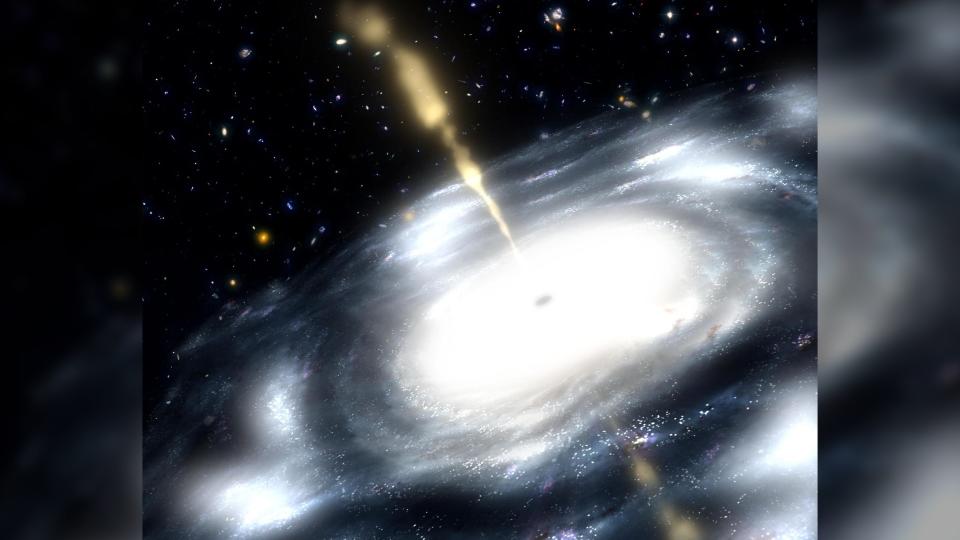What's the biggest black hole in the universe?

Black holes are some of the most massive single objects in space, but what's the biggest one in existence, and how big can they get?
It turns out that there is a theoretical limit to the size of black holes — celestial objects so massive that even light cannot escape them. And the largest directly observed black hole with a confirmed mass is right around this limit.
This monster, appropriately named TON 618, weighs roughly 40 billion solar masses. TON 618 has a radius of over 1,000 astronomical units (AU), which means that if the black hole was placed in the center of the solar system, by the time you reached Pluto, you would be less than 5% of the way from the center of the black hole to its edge.
TON 618 sits about 18.2 billion light-years away from Earth. In the night sky, it sits on the border between the constellations Canes Venatici and Coma Berenices. Astronomers first spotted it in a 1957 survey from the Tonantzintla Observatory in Mexico but didn’t realize what it was. They first thought it was a faint blue star, but observations a decade later revealed that the astronomers had glimpsed intense radiation from the material falling into the giant black hole.
TON 618 powers a quasar, one of the brightest objects in the entire universe with the illuminating power of 140 trillion suns. Quasars draw light from the gravitational energy of the central black hole. Material around the black hole falls in, and as it does so it compresses and heats up, releasing enormous amounts of radiation. While individual events like the most powerful supernovas can briefly outshine quasars, they only last a few weeks. In contrast, quasars can shine for millions of years.
However, quasars are so far away that they only appear as faint spots of visible light in even the most powerful telescopes, and astronomers first detected them by their powerful radio emissions.

 Yahoo Autos
Yahoo Autos 